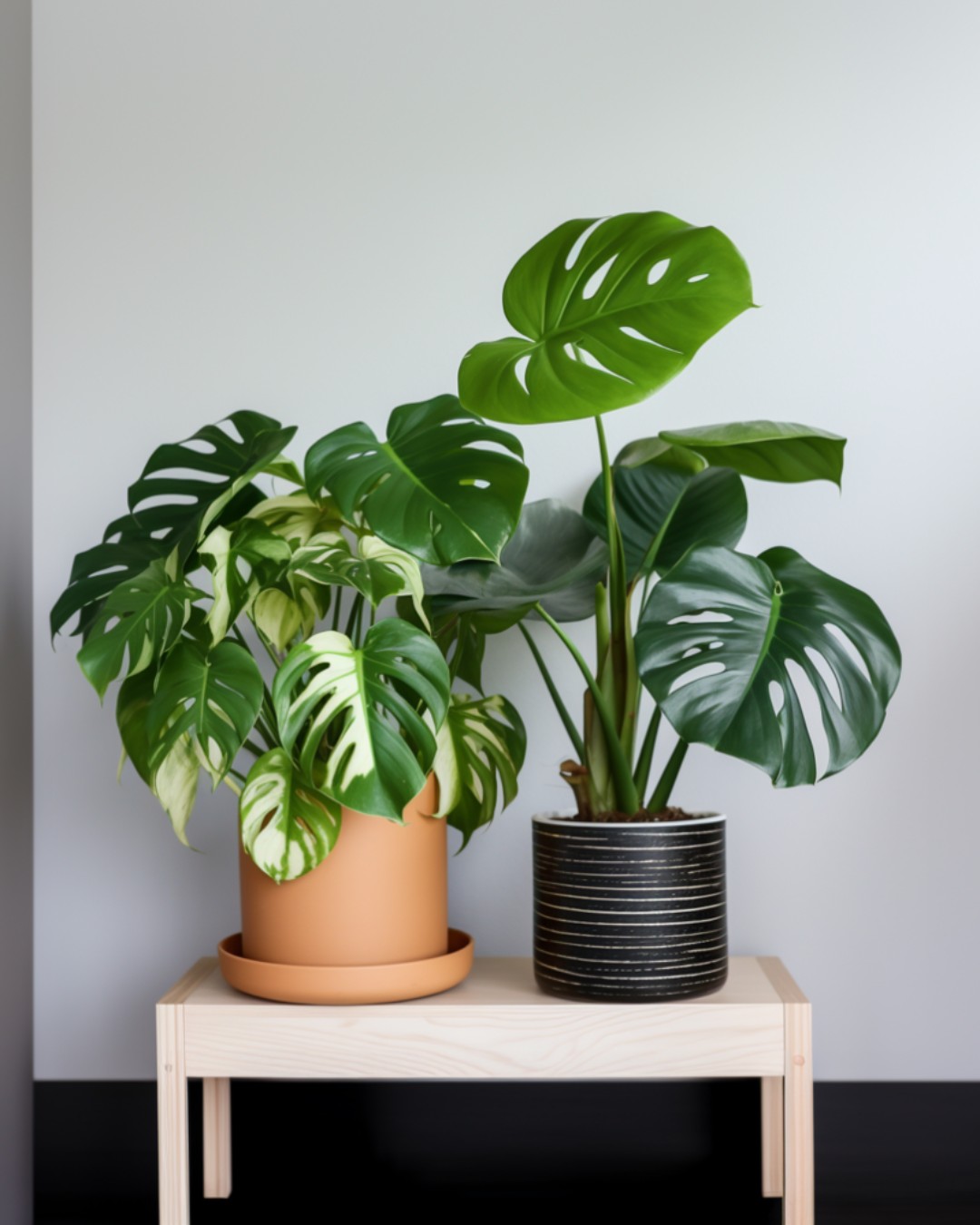
We may get commissions for purchases made through links in this post
Got a Monstera plant with eye-catching variegated leaves? It’s like having a piece of art in your living room.
Those unique patterns and splashes of color give your indoor garden an extra layer of excitement and a touch of personality.
But what if the kaleidoscope of colors starts to fade, leaving you with just plain green leaves?
Don’t worry, there’s a way for your Monstera to get its variegated leaves back. Understanding why variegation can sometimes disappear is key to keeping your plant looking its best.
In this article, we’ll walk you through the primary causes behind the loss of variegation in Monstera plants and provide helpful tips on how to prevent it.
What is Variegation?
Variegation is a characteristic found in some plants, like some varieties of Monstera, where their leaves display multiple colors, often as irregular patches or stripes.
The different colors in the leaves are due to the irregular distribution of chlorophyll.
This can be caused by various factors such as genetic mutations or even environmental conditions.
The phenomenon can add a unique touch to your indoor or outdoor garden and make your Monstera plants more visually interesting.

Does Variegation Have a Purpose?
Variegation often plays an essential role in a plant’s ability to adapt to specific environments.
For some plants, variegated leaves may help with photosynthesis, while for others, it can serve as a defense mechanism against predators.
FREE: Printable Monstera Care Sheet
Get your print-ready cheat sheet for easy reference. Put your email below to get it right away!
In the case of Monstera plants, variegation is primarily a trait that makes them more attractive to collectors and plant enthusiasts.
Knowing how to maintain and prevent the loss of variegation in your Monstera plants is crucial to keep them looking their best.
Stay attentive to their needs, such as providing the right amount of light, water, and nutrients, to help preserve their unique and colorful patterns.
Causes of Variegation Loss
Several factors can contribute to the loss of variegation in Monstera plants, including insufficient light, over-fertilization, or improper propagation.
By learning more about these factors and how they affect your Monstera’s appearance, you’ll be better equipped to maintain your plant’s charming display of colorful leaves.
Environmental Factors
One possible cause of variegation loss in Monstera plants is due to environmental factors.
Monstera plants thrive in medium-light locations, and providing proper light conditions is essential to maintain their variegation.
If your Monstera receives too little light, the variegation may fade, while too much direct sunlight can cause the leaves to scorch or turn yellow.
Another environmental factor to consider is the soil your Monstera is planted in.
Make sure you are using well-draining soil and watering your plant as needed.
A common mistake is to overwater the plant, leading to root rot and a loss of variegation.
Mature Monstera plants typically only need watering once a week or when the top 1 to 2 inches of soil are dry.
Genetic Factors
Genetic factors can also contribute to the loss of variegation in Monstera plants.
Variegation is a result of genetic mutations or chimeras, which can be unstable and can change over time.
This means that some Monstera plants may lose their variegation naturally as they grow and their genetic makeup shifts.
To help preserve the variegation in your Monstera plant, it is essential to prune and propagate the plant correctly.
When propagating, ensure that the cutting includes a node, as this is necessary for successful propagation.
Doing this allows you to maintain a healthy plant with its distinct variegation pattern.
Recognizing Problems
It’s important for you to identify signs of variegation loss in your Monstera plant early on. Some common signs of variegation loss include:
Leaves Losing Their Variegated Pattern
If you notice the white or yellow patches on the leaves becoming smaller or disappearing altogether, this could indicate a loss of variegation.
New Growth Appearing Solid Green
If the new leaves on your plant emerge without any variegation or with considerably less variegation than the older leaves, this might be a sign of losing variegation.
Chlorotic Leaves
Leaves turning a pale green or yellow color might be a symptom of nutrient deficiency or other issues, which can sometimes result in loss of variegation.
Iron chlorosis is one such nutrient deficiency causing leaves to yellow while the tissue close to the leaf veins remains green.
Preventing Loss of Variegation in Monstera
To maintain the variegation in your Monstera, follow these essential care tips:
1. Proper Lighting
Provide your Monstera with bright, indirect light. Too much direct sunlight can scorch the leaves, while insufficient light will reduce variegation.
Place your plant near a window with filtered light, or use a sheer curtain to diffuse harsh sunlight.

2. Appropriate Watering
Over- or under-watering can lead to loss of variegation. Ensure your Monstera’s soil is well-draining and consistently moist, but not waterlogged.
Water your plant when the top inch of the soil feels dry to the touch, and always empty the saucer to prevent standing water.
3. Suitable Temperature and Humidity
Monstera plants thrive in temperatures between 65 and 85°F (18 and 29°C) and humidity levels between 40 to 60 percent.
Keep your plant away from drafts, heat sources, and air conditioning vents. To maintain adequate humidity, you can:
- Use a humidifier
- Place a tray of water near the plant
- Mist the leaves regularly

4. Correct Fertilization
Feeding your Monstera properly helps to maintain its stunning variegation.
Use a balanced, water-soluble fertilizer, and apply it every 4 to 6 weeks during the growing season.
Avoid over-fertilizing, as it can cause leggy growth and reduced variegation.
Always follow the manufacturer’s instructions for the appropriate fertilizer amount.
Proper Conditions Can Restore Monstera Leaf Variegation
Maintaining variegation in your Monstera plants requires careful attention to their growing conditions and proper care.
Always ensure that your plant receives adequate light exposure for variegation to thrive.
Proper watering and fertilization are also key factors in promoting variegation.
By following these steps, you can enjoy the beautiful and striking variegation of your Monstera plants and keep them healthy and vibrant.
